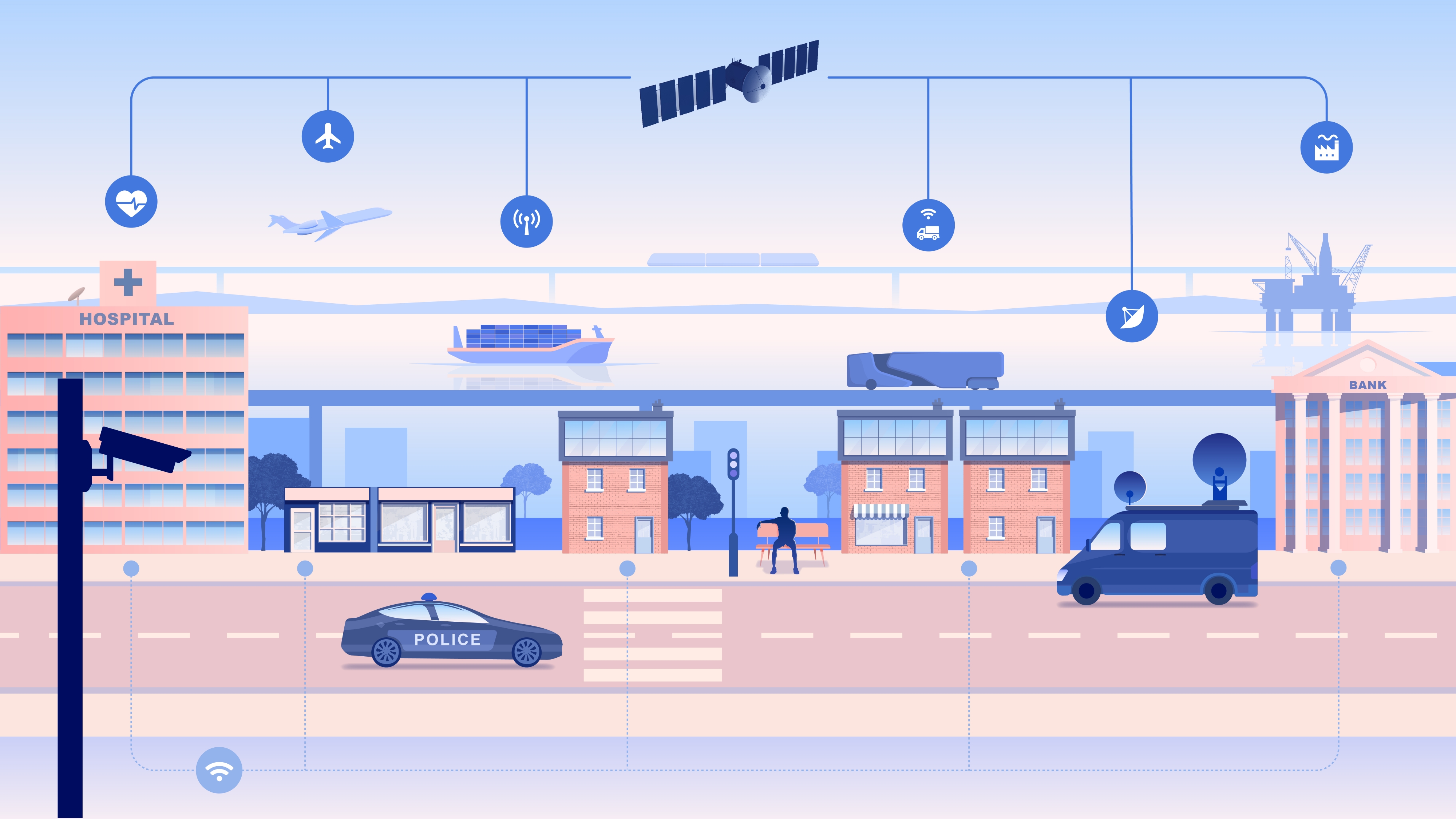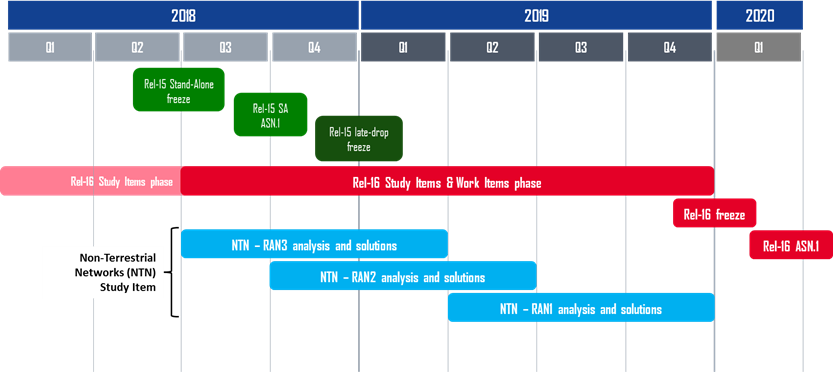Integration of Non-Terrestrial Solutions in the 5G Standardisation Roadmap

The focal point for the development of mobile systems beyond 3G has become the 3rd Generation Partnership Project (3GPP).The decisions reached during the last 3GPP plenary meeting in La Jolla (San Diego, US) pave the way for the successful integration of satellites in 5G.
The approved items address solutions for Non Terrestrial Networks (NTNs), including constellations based on different or combined orbits or platform types (i.e. GEO, MEO, LEO, HAPs and combinations thereof). Connectivity scenarios, architectures and services span a wide range of applications, from backhaul, broadcast/multicast, and enterprise networks to direct connectivity for IoT and public safety – see Figure 1.
In line with ESA’s Satellite for 5G Initiative objectives, the ESA project ALIX prepared technical contributions to both Service and System Aspects (SA) as well as Radio Access Network (RAN) Working Groups (WG). Moreover, ALIX led pre-standardization work, notably through the establishment of the Standardization Special Interest Group (SSIG). Gathering more than 40 members, more than half of which are also part of 3GPP, SSIG is widely represented by satellite operators, service and technology providers, ground and satellite segment manufacturers, international institutes and universities.
The ALIX project developed and proposed a phased standardisation action plan in order to guarantee a graceful convergence of current satellite systems, networks and technologies towards 5G. This plan aims to take advantage of the ever-expanding 5G ecosystem, in which a broad range of design flexibilities and technology enablers support the connectivity and service requirements for both the consumer and industrial verticals, thus creating further opportunities for satellite solutions.
Further efforts are being outlined to intensify contributions in 3GPP within the time span of Release 16 and beyond– see Figure 2. In particular, the next 18 months will be essential for reviewing and proposing solutions in the three main Radio Access Networks Working Groups physical layer (RAN1), interface architectures, protocols, and resource control (RAN2), evolved universal terrestrial radio access architecture and interface protocols specifications (RAN3) – as well as in the Services & Systems Aspects (SA) Working Groups on Services (SA1) and Architecture (SA2). Ongoing developments of large scale integrated satellite terrestrial testbeds, such as the ESA funded SATis5 will also play an active role in these standardization efforts, identifying issues and validating solutions that can be proposed in 3GPP meetings.

The process started in 3GPP enables the cooperation of satellite with terrestrial networks to provide the 5G services with the promised key performance indicators, such as global coverage and mobility, service ubiquity, and the required overall network reliability and security.
The extension of 3GPP protocols and architecture will enable the design and the realization of satellite products to support the integration of satellite and terrestrial networks, i.e. ground satellite communication equipment, future satellite payloads incorporating advanced features for high throughput, onboard re-configurability, inter-satellite links in constellations and hierarchical networks –spanning from conventional RF to optical technology as well as advanced satellite control segment.
With the development and deployment of 5G, the satellite sector can leverage from 3GPP standards to reduce the development, deployment, and operational costs of terminals, as well as benefit from the advanced 5G features to ease network operations and guarantee seamless vertical handovers, multi-tenancy, automation and scalability (plug and play solutions) while reducing overall network CAPEX.


